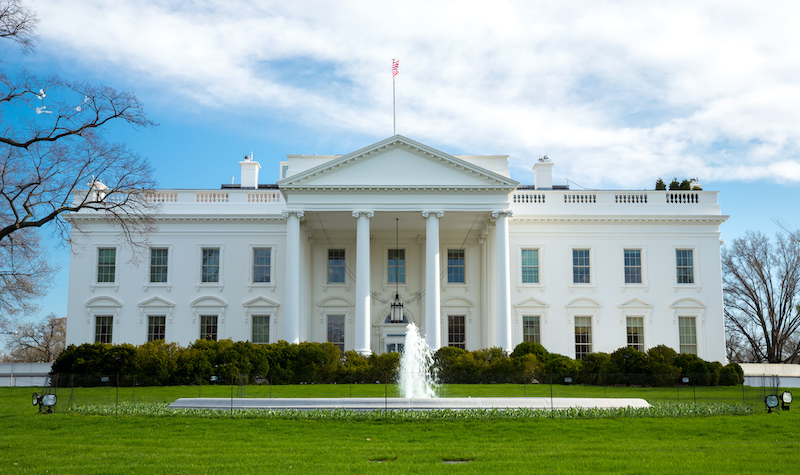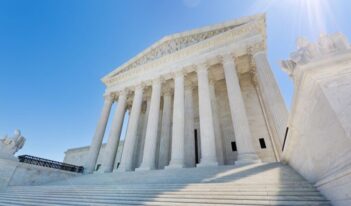
Agency experts—not OIRA—must take the lead in regulatory decision-making under the Biden Administration.
I have friends who wept during the inauguration of President Joe Biden and Vice President Kamala Harris. The sheer relief of watching the departure of a glowering Donald Trump—by far the President most hostile to his own government in modern times—was palpable. Back to normal and rational business—win some or lose some—but at least we all understand the game.
Also a relief to many of us in the regulation world was the rapid issuance of a Biden executive order abolishing bad policies such as the “one-in-two-out” mandate that required agencies to reduce to zero the incremental cost of any new regulation by repealing two existing rules. The Biden Administration has also promised an overhaul of regulatory review in a memorandum instructing the Office of Management and Budget (OMB) director to consult with agency heads and provide “concrete suggestions” for modernizing the process.
Cost-benefit analysis remains the threshold for approval of proposed and final regulations by OMB’s Office of Information and Regulatory Affairs (OIRA). But considering President Biden’s references to “social welfare, racial justice, environmental stewardship, human dignity, equity, and the interests of future generations” in his memorandum, how much will the Administration soften the current rigid adherence to number crunching under cost-benefit analysis?
Ultimately, the Administration will improve regulatory review only if it elevates the substantive and political judgments of agency administrators over the repressive instincts of the small cadre of economists whose power has varied depending on OIRA’s leadership. Administrators and their staffs in the agencies, especially the U.S. Environmental Protection Agency (EPA), know how to do cost-benefit analyses and write the regulations that OIRA reviews. But EPA and other agencies also have the capacity—and the legal mandate—to make science-based, precautionary, and compassionate decisions that the Clean Air Act and similar laws mandate.
President Biden is the first President to elevate climate change mitigation to the first tier of his agenda. To deliver on his message, he must ensure that EPA and other agencies are not fighting a rear-guard battle behind their own lines. Should OIRA staff win the inevitable power struggle with agency experts, the Biden Administration will undermine its public health, worker safety, and environmental initiatives.
The ambiguity of the modernization memorandum’s long-term consequences has manifested itself in the clashing interpretations of two opposing warriors in the regulatory review battle.
Cass Sunstein, who served as OIRA administrator during the Obama Administration, announced that the memo was “exceedingly important” because “it affirms the long-standing process managed” by OIRA, including “a significant role for cost-benefit analysis.”
James Goodwin, senior policy analyst at the Center for Progressive Reform and a critic of cost-benefit analysis, told The Huffington Post that the memo “has the potential to be the most significant action Biden took on day one.”
Considering that President Biden’s day-one actions included re-joining the World Health Organization and the Paris Agreement, freezing student debt collection, and abolishing the Muslim ban, both Sunstein’s and Goodwin’s predictions were quite remarkable.
Few regulatory experts—if any—thought the Biden Administration would repeal the mandate to conduct cost-benefit analysis contained in President Bill Clinton’s 1993 Executive Order 12,866. When Presidents are intent on regulating, as Clinton was with respect to smoking, OIRA recedes into the background. But when Presidents want to suppress agencies, such as EPA, OIRA takes point. When Sunstein served as President Barack Obama’s regulation czar, he blocked or weakened rules developed by EPA, the Occupational Safety and Health Administration, and the National Highway Traffic Safety Administration.
Despite Sunstein’s claims about objectivity and the overriding wisdom of cost-benefit analysis, the Obama Administration often used number crunching to justify decisions made for political reasons. This taint is unavoidable when the White House seizes control of high-profile rules from their agency authors.
For example, when Sunstein reportedly helped President Obama decide to block EPA’s more protective ozone rule during the lead up to the 2012 election, the two men made a political decision that almost drove then-EPA Administrator Lisa P. Jackson to resign. Elections have consequences, but no concession to that effect exists in the Clean Air Act’s mandate that the EPA administrator consider reducing a deadly pollutant as required to protect public health. Bowing to political expediency convinces people that government is untrustworthy.
Under the Trump Administration, most players in the health, safety, and environmental arenas did not focus on OIRA because the agencies’ top political appointees captured their full attention, doling out deregulation to special interests freely. This structure—trusting the Cabinet rather than White House staff—was as sound as its content was malevolent.
Prioritizing OIRA’s authority on regulatory policy reflects a powerful trend away from cabinet-centered governance. This trend has persisted through Democratic and Republican administrations and is fed by three assumptions.
First, Presidents appear to believe that they need White House loyalists to protect them from the civil service. Second, Presidents worry that their agency political appointees will get captured by the career staff and care more about the agency’s missions than the President’s political viability. Finally, White House staff harbor the conceit that they are smarter, more politically astute, and more competent than agency career and political staff.
Accompanying the eclipse of the Cabinet came the erosion of faith in a dispassionate civil service delivering science-based decision-making. The civil service was already in a weakened and susceptible state when President Trump took office. The Trump Administration put it on life support. President Trump’s allegations about deep state machinations and mangling of the pandemic response drove confidence in government down to 20 percent in fall of 2020. No other modern President has alleged such conspiracies, probably because they would make him look like he does not have control over the government.
President Biden and his core advisors seem aware of the need to build back the civil service. But that formidable task must begin and end with the Cabinet.
Biden’s commitments to lead the United States out of the pandemic, mitigate climate change, protect student borrowers, deliver immigration reform, advance racial justice, and reengage with world leaders all rest on his determination to return members of his Cabinet to hegemony over their jurisdictions. Similarly, Biden’s new approach to regulatory review should be crafted by the agencies—not OIRA staff.
From this perspective, Biden appointments have been uneven. For crucial positions at the U.S. Departments of Defense, State, Justice, and Treasury, Biden chose seasoned veterans who will formulate wise policies and resist inept White House interference. His appointees at the U.S. Departments of Transportation (Pete Buttigieg), Labor (Marty Walsh), and Interior (Deb Haaland), as well as EPA (Michael Regan), are politically popular but lack experience in navigating Washington and managing large staffs.
Clouding the prospects for the resurrection of the Cabinet is the Administration’s appointment of two high-profile, White House-based climate positions. The Administration might have made promises to former Senator and Secretary of State John Kerry and former EPA Administrator Gina McCarthy to persuade them to join the White House staff, where their resources and staff are limited. Overcoming these limits will take concerted attention. Indeed, former EPA Administrator Carol Browner’s experience during the Obama Administration provides a cautionary tale.
A former director of OIRA once explained to me that his job was to make sure that civil servants did not embarrass the President by putting out substandard work. The notion that such a safety valve was perceived as crucial by a White House official is not surprising. But such conceits are the last thing the United States needs if confidence in government is ever to be restored. Resurrecting and trusting expert agencies is a far better and more permanent solution.
This essay is part of a six-part series entitled Regulatory Review Reimagined.




